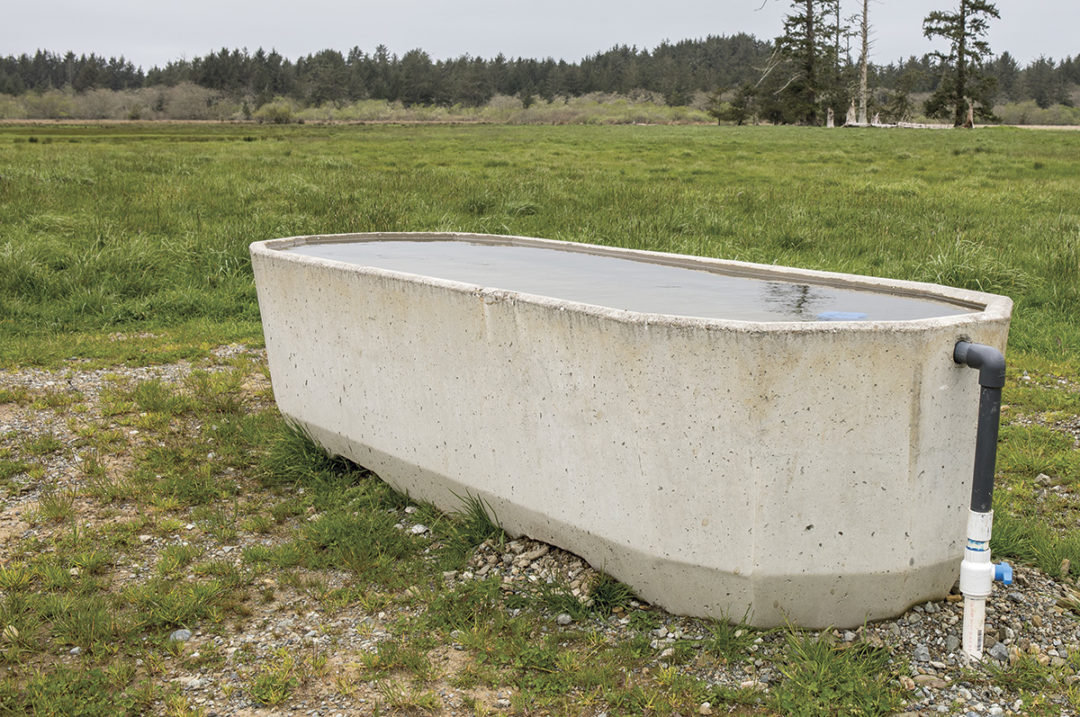Water is the most important nutrient to livestock but is often overlooked from a nutritional standpoint, even though it is required for regulation of body temperature, digestion, absorption of nutrients, waste removal, fetal growth and lactation. All the grass in the world means nothing without quality water.
It is critical to monitor livestock water quality because poor quality can have a negative effect on growth, reproduction and general productivity of the animal. In some cases, death could occur within days or hours after consumption of contaminated water or water deprivation. The visual appearance of water should not be used to determine whether the water is good or bad. The only way to know if water is suitable for livestock is through testing.
A “quick test” with a handheld field meter can be used to determine salinity to provide a baseline of water quality. Unfortunately, poor quality has been present in many producers’ water sources this year. In South Dakota – this comes as no surprise – the 2021 drought and minimal snow runoff this spring perpetuated the issue. Due to efforts of South Dakota State University Extension, over 522 water samples were tested across the state during the 2021 drought. Of the samples tested, 34% were at a total salt content level that could affect performance, and sporadic cases of polio could occur due to sulfates. This summer, over 40% of the water samples were at this level, even though more rainfall was noted across the state.
So, what are some factors that influence water quality?
Salinity
Salinity refers to the dissolved salts that are found in all water sources and is a common problem in South Dakota. However, salinity can be raised to a concentration that is toxic to livestock. Animals may refuse to drink for several days following consumption of large amounts of highly saline water. The animal may also continue drinking an adequate amount of water but dehydrate as a result of reverse osmosis. In either case, illness or death will result. Animals that have an increased requirement for water (i.e., during lactation and pregnancy) will be the most susceptible to the salinity problem. Limited snow runoff and dry conditions, along with evaporation, are all responsible for increased salinity concentration and should be a warning sign to producers. However, even during years of more rainfall, water sources can be high in salinity. Cattle can acclimate to more saline water; however, weight gains for all classes of cattle, including suckling calves, will be negatively affected. Cattle accustomed to high-quality water will experience a more noticeable impact when exposed to poor-quality water. If cattle are trying to get back to where they were, it’s a good indication that water is bad.
Sulfates
Sporadic cases of polio can be seen when high levels of sulfates are present in the water. A common symptom of polio is blindness, but other signs include lethargy, anorexia, muscle tremors, exaggerated response to sound and touch, incoordination, staggering, weakness, head pressing, and eventually convulsions and an inability to get up. Polio can be successfully treated if caught early. Contact your veterinarian to determine your treatment plan if you have any concern of potential losses due to polio. Treating with antibiotic will not correct the problem.
Research conducted at South Dakota State University's Cottonwood Field Station near Philip, South Dakota, has evaluated the effect of high sulfate levels on both cow-calf pairs and yearling steers grazing pastures. Both classes of livestock were negatively impacted. Cows consuming high-sulfate water (2,608 parts per million [ppm]) lost 36 pounds, while cows on low-sulfate water (388 ppm) gained 15 pounds during the treatment period (June 3 to Aug. 26). Yearling steers grazing pastures with high-sulfate water had a decreased average daily gain and a few cases of polio at levels of 3,900 ppm and 4,600 ppm.
Nitrates
High levels of nitrates can be detected in water, but more common sources of elevated nitrates are in forages (i.e., sorghum, sudangrass, oats). Nitrates themselves are not toxic, but the conversion of nitrates to nitrites in the rumen is responsible for conversion of hemoglobin into methemoglobin, rendering red blood incapable of carrying oxygen and ultimately resulting in suffocation. Dark brown blood is a good indicator that nitrate poisoning was the culprit.
Blue-green algae
Warm temperatures, calm days and stagnant water make conditions right for blue-green algae blooms. Blue-green algae is toxic to all classes of livestock, as well as small animals and humans. Consumption can result in death within 24 hours. Due to the rapid death of the animal, it is often challenging to notice the symptoms of toxicity, which include tremors, paralysis, respiratory failure and diarrhea. To make matters even more challenging, the blooms come and go very quickly, making blue-green algae difficult to identify in water.
As the algae begin to die, gas is produced in the cells, causing the colonies to float to the water’s surface. The wind blows the algae blooms to the shorelines, resulting in concentration and easy access to livestock. The name can be deceiving, since the algae can appear pea green, teal and even red. It is different than the typical mat algae, appearing like spilled paint or small grains of green sand at the water’s surface.
Not all blue-green algae is toxic. If you suspect that you have lost livestock to blue-green algae toxicity, work with your veterinarian to collect the appropriate samples to confirm or deny blue-green algae toxicity. The quick test that determines salinity does not detect blue-green algae.
Poor water quality can be managed by monitoring both the water and the livestock. If you have any question about the quality of your livestock’s drinking water, test it. A sample can be collected in a clean bottle or jar. Many extension services provide the quick test across their respective states. You can also visit with a nutritionist or veterinarian for assistance. Be proactive rather than reactive and test before turnout to a new pasture.











